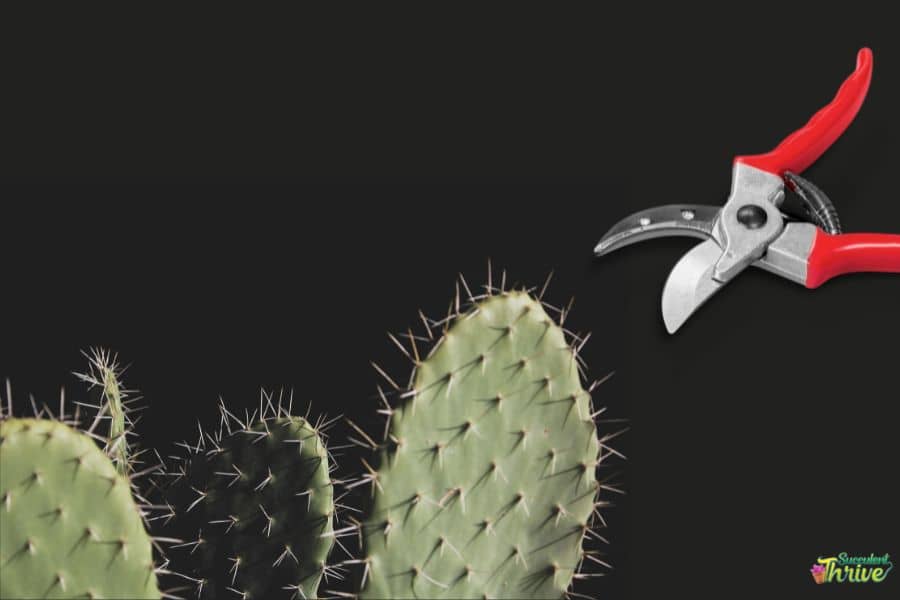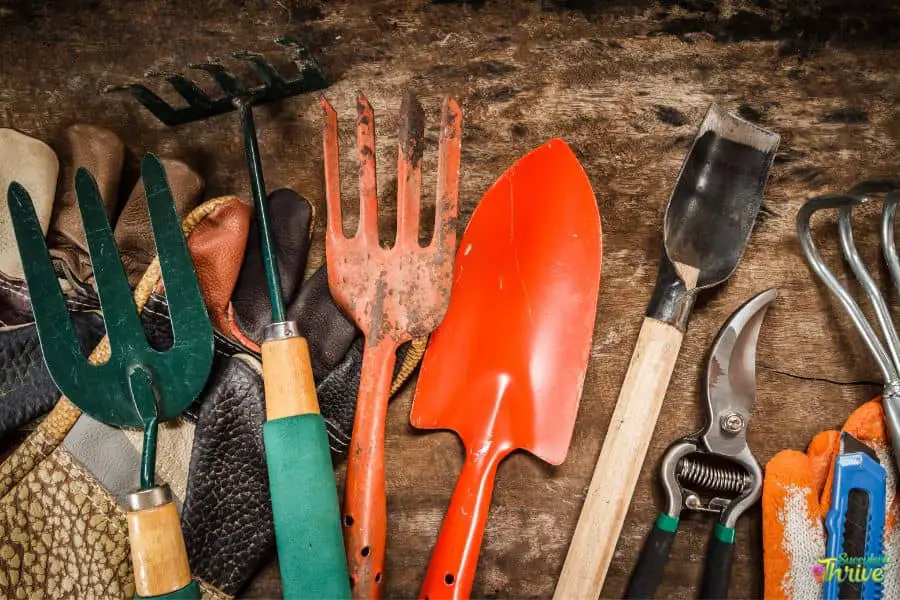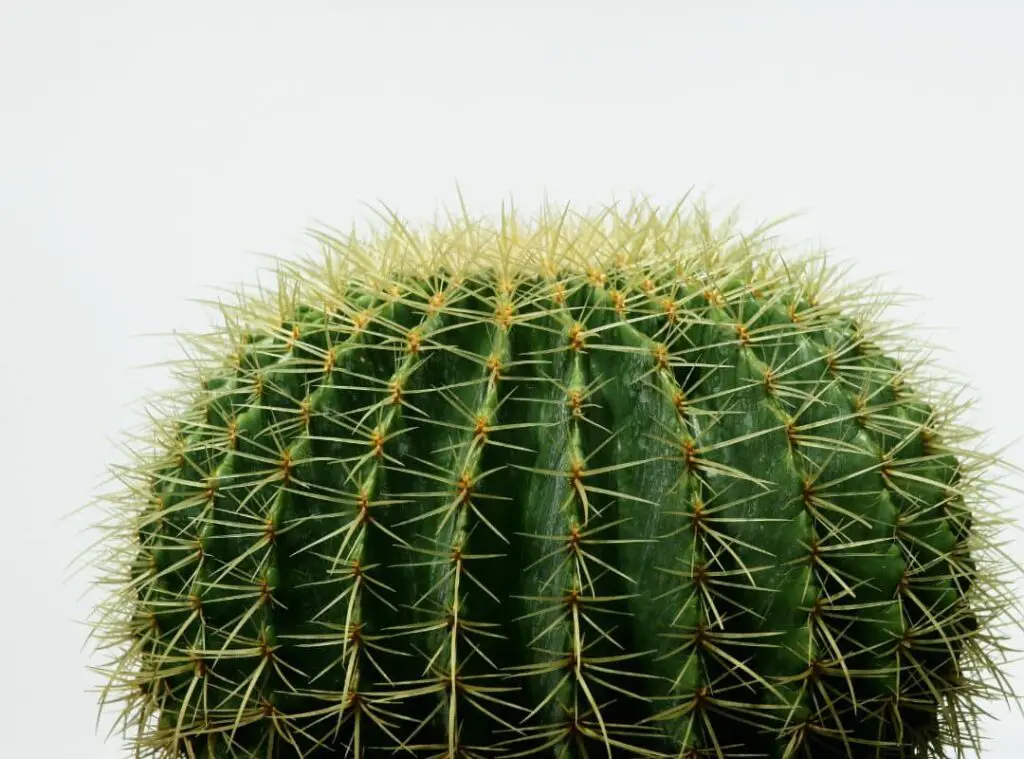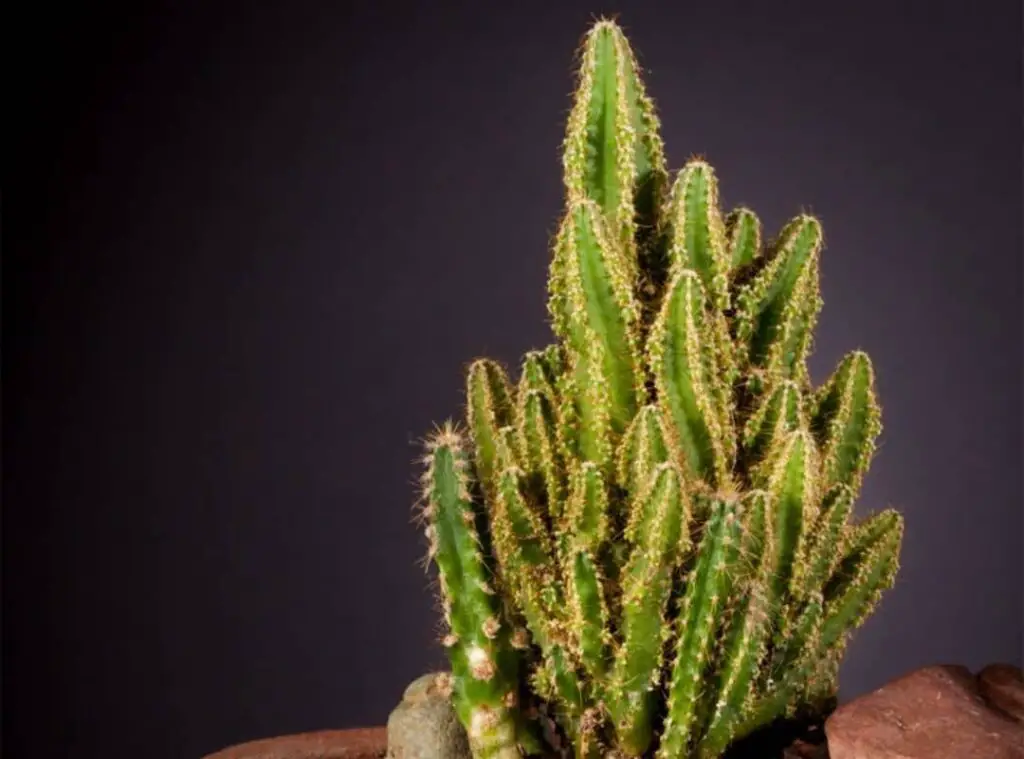I’m here to provide you with the ultimate guide to cactus pruning. Whether you’re a novice or an expert, this article’s got all the tips and tricks you need for healthy plants that’ll last for years.
Pruning is essential when it comes to keeping them in top shape. Not only does it help maintain their size and shape, but also helps promote healthier growth while preventing diseases from spreading. Plus, if done properly, it can even give your plant an aesthetic boost too!

So without further ado, let’s dive into my comprehensive guide on how to effectively prune your cactus. From understanding the basics of cacti structure to selecting the right tools. I’ll walk you through everything you need to know about trimming those spiky beauties!
The Benefits Of Pruning Your Cactus
Many people may think that pruning their cactus is a waste of time, but in reality it has many benefits. Pruning your cactus plants can help ensure better growth and even health benefits for the plant itself. Plus, you’ll be able to avoid overgrowth which can lead to pest problems or other issues with maintaining the cactus. So as an expert on cacti care, I’m here to tell you why pruning is important and how it can benefit your green friends!
The first benefit of pruning your cactus is that it encourages new growth. By removing dead and dying parts of the plant, you give space for healthier branches to grow. This allows more light and air circulation around the plant and helps prevent disease from spreading throughout the entire plant quickly.
Additionally, by trimming off any excess foliage or stems, you keep the overall size of your beloved succulent under control without compromising its health. All in all, regular pruning will leave your cactus looking lush and healthy – win-win! Moving forward, let’s discuss some tools we’ll need for successful pruning ahead.
Tools You Need For Pruning Your Cactus
Now that you know the benefits of pruning your cactus, let’s discuss which tools are best for doing so. First and foremost, it is essential to use sharp tools when pruning a cactus; dull blades can lead to ragged cuts and potential injury to the plant. Here is a list of must-have items for successful cactus pruning:
- Pruning shears – these should be strong enough to cut through thicker parts of the stem or branches without crushing them.
- Cactus gloves – these will protect your hands from any spines while pruning.
- Garden clippers or a sharp knife – both can be used on smaller stems or even leaves with safety precautions in mind.
- Pruning saw – this is necessary if you need to trim larger sections from the plant as it provides more leverage than other tools.
It’s important to keep all your pruning tools clean and sharpened between uses. This will help ensure that each cut made during pruning is precise and less damaging to the overall health of your cactus. With the right supplies at hand, you’ll be ready for effective and safe cactus pruning! Next up we’ll discuss when is the best time to do some snipping on your beloved succulent friend.

When To Prune Your Cactus
Have you ever wondered when the right time to prune your cactus is? Knowing when to prune your cactus is as important as knowing how! The best time to prune a cactus depends on its type, size and age. Generally speaking, it’s advisable to wait until after flowering season before beginning any pruning activity.
In terms of timing, the ideal moment for trimmering a mature cactus typically occurs during early summer or late spring – just before new growth appears. This is also an opportune time for removing dead stems and branches; however, if this isn’t possible due to weather conditions or other factors, then it’s safe to go ahead with trimming in winter or fall. For young plants, one should be extra cautious while executing pruning operations since they are more vulnerable than their adult counterparts and can suffer from shock if not handled properly.
It’s always wise to use sharp tools like scissors or shears instead of knives – no matter what stage of development your plant belongs too. Additionally, certain techniques such as thinning out overgrown clusters and cutting off pups from mother plants may require specialized knowledge and expertise so seeking expert advice prior to attempting these tasks is highly recommended.
Pruning at the wrong times can have harmful effects on both old and young plants alike thus making them susceptible to pests and diseases. So take your time and do some research beforehand – that way you will ensure that your beloved cacti look healthy all year round!
How To Prune Your Cactus
Pruning your cactus is an essential part of keeping it healthy. With the right pruning techniques and tools, you can easily maintain the shape of your cactus while preventing potential problems. Here are some tips for pruning:
- Use a sharp pair of scissors or shears to cut off any dead or overgrown branches.
- Choose the right size cutting tool – too small could damage the plant, while too large may not be able to reach certain areas properly.
- When removing dead leaves, try to only take away what’s necessary; this will help prevent shock on the plant from drastic changes in its appearance.
- Be sure to disinfect your cutting tool after each use with rubbing alcohol or vinegar solution to prevent disease spread.
- Take care when handling spikes and thorns as they can cause injury if handled incorrectly.
By following these simple steps, you’ll be well on your way to successfully prune your cactus! Pruning regularly also helps keep pests away since there won’t be much shelter for them once all their hiding spots have been trimmed away. It’s important to remember that different types of cacti require different levels of maintenance so make sure you do research before starting any pruning project. With proper technique, patience and a bit of practice, you’ll soon become an expert at cactus pruning!
Common Problems And Solutions
As a cactus pruner, you should always be aware of common problems and solutions for unhealthy cacti. Discolored spines can indicate improper watering or too much sun exposure. To resolve this, adjust the plant’s environment accordingly. Dried flowers can also signal dehydration, so make sure to check your soil regularly and water as needed.
Damaged roots can mean that the root system has been over-pruned; avoid cutting off more than one third of the root mass at once. Finally, pest infestations can occur if pests are introduced in contaminated soil or on gardening tools— disinfect soil with chlorine bleach before use and clean all tools prior to pruning. All in all, keeping an eye out for signs of distress is key in maintaining healthy cacti plants! So how often should I prune my cactus?

How Often Should I Prune My Cactus?
Pruning your cactus regularly and accurately is essential to maintaining a healthy plant. But how often should you trim? Pruning frequency, cactus trimming, trimming cycle, pruning schedule and pruning intervals must all be taken into account when establishing an effective pruning routine. Here are five top tips for determining the best pruning frequency:
- Observe your cactus’ growth pattern. Keeping track of how quickly or slowly new growth appears will help determine how often you should prune it;
- Pay attention to its environment – if your cactus is in direct sunlight, more frequent pruning may be necessary as it grows faster due to higher levels of light exposure;
- Avoid overpruning – if your cactus has active growing periods followed by dormant ones, only trim during the growing season;
- Consider seasonal weather changes – If temperatures drop drastically in winter, consider delaying any major prunings until springtime;
- Monitor signs of stress – if you notice weak stems or discolored leaves on your plant, these could indicate that too much water has been lost from excessive pruning.
Overall, there’s no one-size-fits-all approach to cactus pruning – each species requires different levels of care depending on their individual needs and environmental conditions. By taking careful note of the above factors and tailoring your own unique plan accordingly, you’ll soon master the art of successful cactus pruning! With this knowledge firmly under our belt, let’s move onto considering whether we can propagate our cactus cuttings…
Can I Propagate My Cactus Cuttings?
Yes, you can absolutely propagate your cactus cuttings! In fact, this is a great way to increase the size of your cactus collection without spending any money. Cacti are one of the easiest plants to propagate and rooting cactus cuttings usually takes just a few weeks. To get started, use clean scissors or pruning shears and make sure that each cutting has at least two good growing points (or tubercles). Dip the end of the cutting in rooting hormone powder if desired – though it’s not necessary for most species.
Next, prepare your soil mix by combining equal parts sand and peat moss. Place each cutting into its own pot with drainage holes and then fill up the remaining space with more soil mixture. Keep your newly potted cacti in bright indirect light and water them thoroughly once per week until they begin to sprout new growth from their ends. Once established, move them outdoors in warmer climates because cacti love sunshine! With proper care and attention, these propagated cactus cuttings will grow healthy roots on their own over time.
Can I Propagate My Cactus Cuttings?
Pruning plants can be a perplexing process, but propagating cactus cuttings is both practical and possible. Propagation requires you to take careful steps for successful rooting of your cuttings. Cutting the cacti correctly with clean tools increases the chances of success when it comes to water propagation.
First off, identify which parts of your plant are healthy before pruning any cuttings from it. Cut away only what’s diseased or dead – this will ensure that you don’t introduce an infection into newly rooted propagations. When taking cuttings, pick stems that have at least three segments on them as these tend to root easier than single-segmented ones. Then use a sharp blade or scissors to make two angled cuts into each cutting just above where the segment meets the stem – one facing outward and another inward so they form a V shape.
Next, position and secure the cuttings in pots filled with well-draining soil mix such as sand or perlite combination; moistening lightly then covering loosely with plastic wrap until roots appear – usually within 4 weeks. Once rooted, remove plastic cover and allow them to sit in direct sunlight for several hours every day while providing adequate water support until mature enough for repotting .
By following these easy tips and tricks, you’ll not only give yourself valuable experience in growing cacti but also achieve beautiful results!

Can I Prune My Cactus In The Winter?
Yes, you can prune your cactus in the winter. However, it is important to understand that there are certain risks associated with winter pruning of cacti. The cold temperatures can cause plants to be more susceptible to frost damage and other environmental issues such as mold or mildew growth. In addition, a lack of adequate sunlight during the winter months can hinder photosynthesis and stunt new growth. Therefore, it is best to limit pruning efforts during this time period.
If you decide to proceed with winter cactus pruning, make sure you take extra precautions. Invest in quality gardening gloves and wear them while handling the plant – especially when removing spines and cutting stems – to avoid any potential injuries. Also, ensure all tools used for pruning have been properly sterilized beforehand; using unclean equipment could lead to infection or disease on the cactus itself.
Do I Need To Sterilize My Pruning Tools?
It’s important to keep your pruning tools sterilized when caring for cacti. This is because you don’t want to risk introducing any kind of disease or pests into the plant that could harm it. And, if you’re using the same tool on multiple plants, then it definitely becomes even more essential to make sure that it stays clean and free from any contaminates.
So how can you ensure that your pruning tools are always sterile? First, be sure to wash them thoroughly with soap and hot water after each use. You also need to disinfect them with rubbing alcohol or a solution of bleach and water afterwards. Make sure you allow plenty of time for drying between uses, as well. Additionally, consider investing in some new pruning tools specifically designated for cactus care; this way, they won’t get mixed up with other gardening items and run the risk of being contaminated by something else. Following these steps will help guarantee the health of your cactus and keep your pruning tool safety standards high!
Conclusion
As a cactus pruning expert, I always recommend that you take the time to properly prune your cactus. The benefits of doing so are immense and can help ensure your plant stays healthy for many years to come. With some basic knowledge and an understanding of when, how and why to prune, you’ll be able to create a beautiful oasis in no time.
Moreover, it’s important to understand common issues like sterilizing tools or propagating cuttings as well. Don’t forget that just because winter is here doesn’t mean you have to stop pruning! As long as you follow the advice given above, even during the colder months, your cactus will continue to thrive.
In conclusion, with proper care and attention, your cactus should remain robust throughout all seasons – providing not only physical beauty but also peace of mind knowing that your hard work paid off! So go ahead: grab those shears and get ready for a rewarding experience that comes with successful cactus pruning!
Read Next : Aloe Polyphylla Care | Nature’s Marvelous Creation
